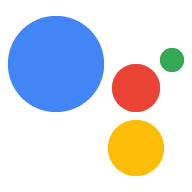أكثر من 500 مليون شخص شهريًا ينجزون المهام باستخدام "مساعد Google" على أجهزتهم، ويريدون أيضًا قضاء وقت ممتع. في هذه الحالة، يمكنك الوصول إلى عدد أكبر من اللاعبين والجماهير الجديدة من خلال قول عبارة "لنلعب!"
تعرَّف على الطريقة التي تتضمّن بها منصة "مساعد Google" أكثر من لاعبيك الاعتياديين، وكيف يمكن أن تساعدك الشاشات الذكية في جذب لاعبين جُدد إلى لعبتك.
"Ok Google، لنلعب لعبة"
إنّ بدء تشغيل لعبة باستخدام "مساعد Google" في غاية البساطة. على عكس منصات الألعاب الأخرى التي تتطلّب وحدات تحكّم ومستوى عالٍ من تجربة الألعاب، يمكن لأيّ شخص تشغيل لعبة على "مساعد Google". فكِّر في الطريقة التي سيفتح بها هذا الأمر إمكانيات جماهير ألعاب الفيديو الجديدة، مثل اللاعبين الأصغر سنًا في المنزل.
بفضل بساطة الواجهات المحكية وفعاليتها، يمكن لأي شخص تقريبًا فهم لعبتك وتشغيلها، كما تسمح لك بتنويع أسلوب اللعب من خلال طرق لا يمكن تنفيذها على المنصات الأخرى. يمكنك مثلاً إنشاء ألعاب معلومات عامة أو مغامرات يمكن لجميع أفراد العائلة المشاركة فيها من خلال تغيير مستوى التعقيد المطلوب لردود اللاعبين. على سبيل المثال، قدِّم للّاعبين الصغار خيارات محدّدة للعبة المغامرة أثناء دورهم، واطلب من اللاعبين الأكبر سنًا أن يشرحوا خطواتهم التالية.
تصميم للّعب الجماعي
وغالبًا ما يتم وضع الشاشات الذكية في الأماكن المشتركة، مثل المطبخ أو غرفة العائلة. لذا، إذا تفاعل أحد اللاعبين مع لعبتك، فمن المحتمل أن يسمع المزيد من الأشخاص المحادثة. وهذا يعني أن لديك الفرصة لجذب جمهور إلى لعبتك. مع وضع نموذج التفاعل هذا في الاعتبار، ضع في اعتبارك هذه العوامل عند تصميم لعبتك:
- تصميم لعبة تناسب الجماهير: يمكنك تصميم لعبتك بالاستناد إلى فكرة أنّه يمكن لأكثر من لاعب واحد المشاركة في اللعبة في الوقت نفسه. في غرفة يشغلها عدة أشخاص، اسمح بخيارات اللاعبين المتعددين إذا أراد المزيد من الأشخاص الانضمام. ادعُ لاعبين جُددًا للانضمام إلى اللعبة في أوقات أو فترات راحة مناسبة أثناء اللعب العادي. كرر الدعوات لتضمين اللاعبين المحتملين الذين يصلون إلى الغرفة بعد بدء اللعب.
- الأنشطة المستمرة المتعددة: غالبًا ما تمتلئ المناطق المشتركة بالنشاط. ضع في اعتبارك كيف يمكن لهذه الأنشطة أن تؤثر في قدرة اللاعبين على الاستجابة، مثل شخص يقطع الخضروات ولا يمكنه الوصول للنقر على الشاشة. وابحث أيضًا عن طرق لدمج هذه الأنشطة في تجربة اللعب.
- ضوضاء البيئة: يجب مراعاة مدى هدوء أو ضوضاء بيئة اللعب. على سبيل المثال، قد يكون صوت المطابخ وغرف المعيشة عاليًا وقد يلتقط الجهاز محادثات أخرى. التخطيط للضوضاء من خلال تنفيذ معالجة قوية للأخطاء. لمزيد من المعلومات، راجع الأخطاء على موقع تصميم المحادثات من Google.
توسيع وقت اللعب
إذا صمّمت ألعابًا لمنصات أخرى، قد تتوقّع حدًا أدنى من وقت الجلسة مطلوب لتفاعل ناجح مع اللعبة. عند تصميم ألعاب لـ "مساعد Google"، من المفترض أن تكون مدة الجلسات أقصر وقد تحتاج إلى إعادة النظر في تعريفك للحد الأدنى لمدة الجلسة.
نظرًا إلى أنّ "مساعد Google" عبارة عن نظام أساسي متوافق مع الصوت ومتوفّر دائمًا، يمكن أن يبدأ وقت اللعب على "مساعد Google" من خلال بضع كلمات فقط من اللاعب وينتهي في أسرع وقت ممكن. وتوفِّر سهولة الدخول إلى اللعبة مزيدًا من الاحتمالات بشأن الوقت والفترة التي يمكن خلالها للاعبيك المشاركة في اللعبة. ضع في اعتبارك أنه يمكن للّاعبين اللعب كجزء من أنشطة أخرى، مثل الحصول على تحديث للمهمة أثناء طهي الطعام، أو في جلسات سريعة، مثل الاطمئنان على حيوان أليف افتراضي أثناء التجول في غرفة المعيشة.
يتيح نموذج التفاعل السريع والبسيط الذي يوفّره نظام "مساعد Google" الأساسي فرصًا للتفاعلات البسيطة مع الألعاب. يمكن للّاعبين إجراء عدّة جلسات قصيرة على مدار اليوم، ما يتيح تشغيل ألعاب الفيديو في الخلفية بالتوازي مع أنشطة أخرى، وهو أمر غير عملي في معظم منصات الألعاب.

